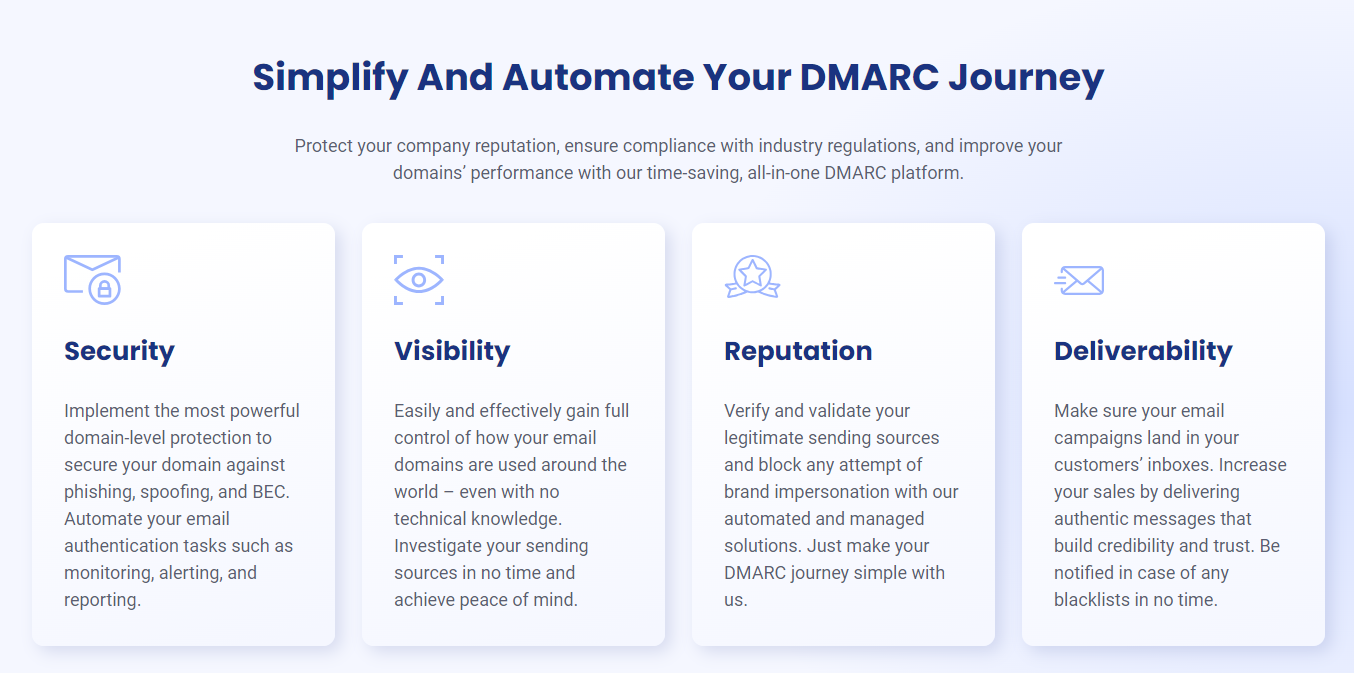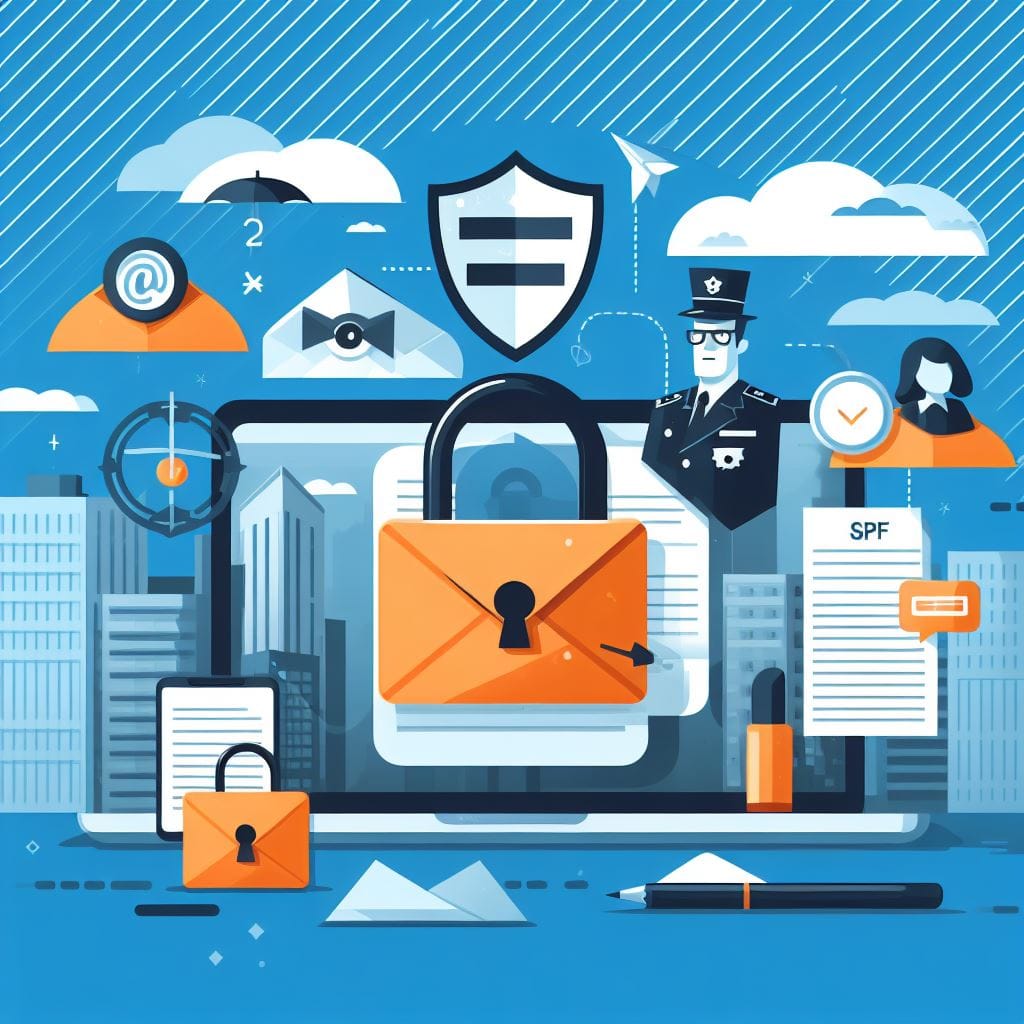Email has become an indispensable communication tool for both personal and business use. However, its popularity has also made it a prime target for cyber attacks. Phishing, spoofing, malware - email inboxes are bombarded daily with threats aiming to steal sensitive information or money. Here is what we can do to mitigate this problem.
The Email Security Problem
To understand why additional email security is needed, let’s look at some statistics:
- Phishing attacks increased by 11% in 2023. A business is hit by a ransomware attack every 14 seconds.
- Email fraud costs companies over $20 billion per year.
- 76% of businesses feel vulnerable to email spoofing.
The cause of this epidemic traces back to weaknesses in the email system itself. When email was first conceived decades ago, authenticating senders was not a priority. Even today, core protocols like SMTP do not have built-in authentication.
This makes it easy for criminals to “spoof” legitimate email addresses and domains. The resulting phishing emails look identical to real messages. Unsuspecting users open dangerous attachments or provide sensitive information to attackers.
Email spoofing diminishes trust in digital communication for both individuals and corporations. It also severely damages sender reputations. Something extra is needed to stem the tide.
Email Authentication with SPF, DKIM, and DMARC
Several email authentication protocols now exist to close email security gaps. They allow receivers to verify the identity of senders and block illegitimate messages. When implemented properly, they can prevent spoofing and improve deliverability.
Sender Policy Framework (SPF)
SPF relies on DNS TXT records to publish which IP addresses and servers are permitted to send mail on behalf of a domain. It works by comparing the client IP address initiating the SMTP session against the published SPF record.
When a message is received by an SMTP server, it extracts the client IP from the socket used and looks up the corresponding SPF record in DNS. If the IP matches or is listed as permitted via mechanisms like "Includes", it passes SPF validation. Otherwise it fails.
Common directives used in SPF records include:
- "
v=spf1": Starts the SPF record - "
include": Includes other domains/records in the SPF check - "
all": Matches any IP not explicitly permitted - IP addresses: Literally lists valid sending IPs
For example, a basic SPF record for domain example.com would be:
v=spf1 ip4:192.0.2.0/24 ip4:198.51.100.0/24 ?all
This authorizes two specific IP blocks and uses a 'softfail' (?) on anything else. Receiving SMTP servers can then reject, quarantine or label messages according to the validation result.
SPF is effective but has limitations - it only verifies the message originated from an authorized client, not necessarily the specified FROM domain. This is where DKIM comes into play.
DomainKeys Identified Mail (DKIM)
DKIM digitally signs messages during transmission using public-key cryptography. It works by having the sending mail server generate a cryptographic signature and add two new headers - DKIM-Signature and DomainKeys-Signature.
The signature is created by concatenating and then hashing specific components of the message (from, to, subject etc.) alongside a domain's private key. Receiving servers can then validate this using the corresponding public key published in a DNS TXT record.
If the hashes match, it proves no alteration occurred and the sender is authorized for that domain. DKIM also supports selectors, allowing multiple keys to be used for things like test/prod environments.
Some key aspects of a DKIM record:
- Issued by domain owner and hosted in their DNS
- Contains public key and selector specifying its purpose
- Receivers fetch public key to validate signatures
For example:
example.com. TXT "v=DKIM1; k=rsa; p=MIGfMA0GCSqG..."
Selector = default
Receivers can decrypt the DKIM header by using the domain's public key. If information matches the email’s content, the message proves authentic.
DKIM strengthens SPF by cryptographically tying messages to a specific domain. While powerful on its own, compliance is much higher when DMARC is also implemented.
Domain-based Message Authentication, Reporting and Conformance (DMARC)
DMARC builds upon SPF and DKIM by defining a uniform policy for how email receivers should handle validation failures. It publishes a TXT record specifying whether to reject, quarantine or merely tag non-compliant messages.
Key aspects of a DMARC record:
- Domain ownership is asserted
- Policy (none, quarantine, reject) defined for SPF/DKIM failures
- Contact details provided for authentication failure reports
For example:
_dmarc.example.com. TXT "v=DMARC1; p=reject; rua=mailto:[email protected]"
Beyond enforcement, DMARC's true value lies in the reporting it generates. Domain owners receive XML reports detailing how much mail was authenticated, rejected etc. This visibility into authentication rates empowers organizations to identify and fix configuration issues over time.
DMARC takes SPF and DKIM a step further by setting authentication policies. It offers three key advantages:
1. Standardized Implementation
DMARC provides consistent Domain-based Message Authentication (no proprietary algorithms). As an open standard, DMARC normalization helps networks better understand authentication policies.
2. Active Security Policy
DMARC asks senders: “What should receivers do with emails failing authentication?” This transforms email protection from passive filtering into an active security system cantered on user preferences.
Policies tell recipients what to do with unverified emails, such as:
Reject: Block the messageQuarantine: Isolate for further scanningNone: Accept but monitor results
3. Centralized Reporting
Aggregated and per-message failure reports provide visibility into all authentication activities. Data like failure rates, problem domains, and attack trends help brands spot issues and fine-tune policies.
With SPF checking senders, DKIM validating content, and DMARC actively handling failures, this trio of protocols closes email authentication gaps. They form the email industry’s best practice for deliverability and security.
The Challenges of Implementing Email Authentication
Understanding the importance of email authentication is one thing. Actually deploying and managing it creates further headaches:
- Monitoring Difficulties - Authentication generates cryptic aggregate and failure reports. Interpreting these without proper tools wastes time better spent on core business goals.
- Technical Complexity - Properly configuring SPF, DKIM, and DMARC across mail servers and DNS records requires specialized expertise most organizations lack. Misconfigurations create security holes attackers exploit.
- Infrastructure Scope - Large enterprises with expansive IT ecosystems struggle running authentication across numerous channels, users, devices, and platforms. Ongoing maintenance challenges multiplication with scale.
- Forensic Analysis - The daily or weekly forensic reports produced by DMARC pose analytics challenges. Interpreting authentication failure trends across millions of emails takes experience most administrators don’t have.
- Limited Internal Bandwidth - Monitoring authentication infrastructure and customizing policies based on shifting email volumes diverts IT teams from other priorities. Few companies can dedicate full-time resources to authentication upkeep.
Facing these issues, most brands stick with the insecure status quo. They leave themselves exposed to phishing scams, promotion blocks, blacklisting, and other threats stemming from authentication gaps.
EasyDMARC - Making Email Authentication Accessible
Source: EasyDmarc
EasyDMARC offers a simpler approach. As an all-in-one email authentication platform, it makes implementing SPF, DKIM, and DMARC easy for any organization.
With an intuitive dashboard requiring no technical expertise, users can set up DMARC records, manage policies, and monitor reports without any friction. Additional capabilities like multi-domain and internal traffic support further simplify authentication for advanced needs.
EasyDMARC helps users achieve total email security through features including:

Full-Service Setup & Maintenance
EasyDMARC handholds clients through establishing authentication frameworks scaled to their specific needs. Ongoing policy and infrastructure optimization is handled via the cloud-hosted dashboard.
Advanced configuration options even support specialized environments like transactional emails, mailing lists, and custom integrations. This eliminates technical barriers to comprehensive coverage.
Quick and Easy Setup
Implement core email authentication like SPF and DMARC in minutes with automated DNS record generation. For more advanced protocols like DKIM, EasyDMARC provides step-by-step setup wizards guiding you through any configuration.
Automated Policy Engine
An integrated policy engine centralizes SPF, DKIM, and DMARC rules to optimize authentication on clients’ behalf. Policies evolve dynamically via automated protocols responding to shifting email volumes, new infrastructure integrations, threats patterns, and other environmental factors.
Rather than perpetually tuning settings manually, EasyDMARC leverages AI to ensure policies maximize both security and deliverability continuously. Clients benefit from proven configurations that “automagically” harden inboxes.
Custom Policies Based on Traffic Patterns
Apply granular authentication policies tailored to your email sending patterns. Set custom percentages of messages checked across different subdomains, sending infrastructure groups, or message types.
Intuitive Analytics & Reporting
Robust interactive reports provide visibility into email traffic and authentication events. Crucially, EasyDMARC data scientists translate complex forensic analysis into actionable business insights for clients.
Source: EasyDmarc
Custom dashboard views allow tailoring reports to the needs of executives, marketers, technical teams, and other stakeholders. Better business decisions can be made across the enterprise.
Multi-Domain Centralization
Manage multiple domains and subdomains from a single dashboard. Group domains by priority, set domain-specific policies, and customize role-based access.
Affordable Plans for All Customers
Given tight IT budgets among small-medium businesses (SMBs), EasyDMARC offers free and low-cost packages with full functionality. Generous authentication request allotments ensure predictable expenses without sacrificing needed protection.
Enterprise-tier plans scale gracefully as well, translating robust feature sets into bottom line savings through automation. Simply put, no organization is priced out of EasyDMARC’s services and support.
Visit EasyDMARC today to start your free trial!
Implementing DMARC with EasyDMARC
1. Sign up for the appropriate plan based on your needs and domain volume. Again, free and low-cost tiers are available for smaller customers.
2. Enter Domains you wish to protect within the administrative dashboard.
3. Deploy DNS Records instantly generated by EasyDMARC which activate SPF, DKIM, and DMARC for your domains. Support assists with any needed adjustments.
4. Examine Reports providing visibility into email traffic and authentication events as DMARC ramps up. If desired, teams can utilize a sandbox environment first to understand how policies impact emails.
5. Consider Policy Changes informed by holistic reporting analysis from EasyDMARC data scientists. As your understanding grows, ratchet policies from initial “monitor-only” through to full enforcement via quarantining/rejection. Let automation handle ongoing optimization.
6. Scale Protection across more business verticals via additional domains, users, and integrations as needed. EasyDMARC’s self-service portal allows painless expansion to match growth.
Within one hour, small shops to major enterprises can deploy comprehensive DMARC frameworks fine-tuned for their unique needs. Ongoing oversight is then handled completely via EasyDMARC automation.
Sandbox experiments allow controlled policy exploration before rolling out changes into production mail streams. Expected authentication improvements are typically seen within days as misconfigurations are remediated.
Conclusion
Email sits at the heart of all modern business communication. Thus, leaving inboxes exposed to phishing, spoofing, and other exploits poses tremendous risk. Lacking defenses, a single breach can inflict financial chaos and reputational damage.
Safeguarding infrastructure via SPF, DKIM, and DMARC authentication is critical but often complicated or costly when tackling manually in-house. EasyDMARC eliminates all barriers through an elegantly simple email protection platform granting access for all.
We welcome any feedback on how to further strengthen this article as a security awareness and education resource. Please email suggestions to [email protected] or share your thoughts in the comments section below. Thank you!



